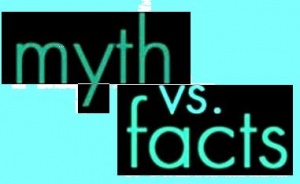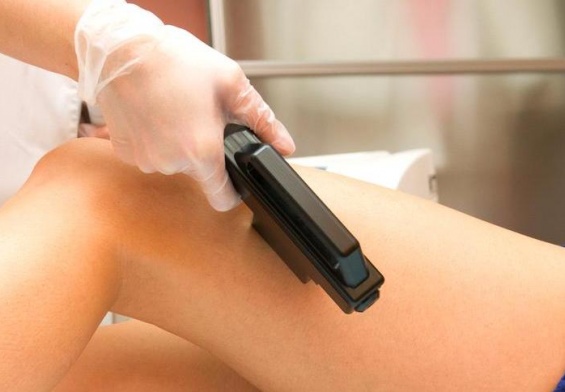 Varicose veins are ugly. Varicose veins are for old ladies. Varicose veins only show up on the legs. Varicose veins don’t afflict men. You’ve likely heard all of these statements, and perhaps you’ve even thought they were all true. But they’re not. In fact, the only statement here that’s true is the one about varicose veins being ugly … they sure are that. But the truth about varicose veins is that they can afflict people of almost any age. They also can develop in areas of the human body other than the legs. And, contrary to what most men would probably like to think, the male gender can, indeed, get varicose veins. Here’s more information that will help separate fact from fiction about varicose veins, and what vein treatment centers recommend for preventing as well as treating this venous skin condition.
Varicose veins are ugly. Varicose veins are for old ladies. Varicose veins only show up on the legs. Varicose veins don’t afflict men. You’ve likely heard all of these statements, and perhaps you’ve even thought they were all true. But they’re not. In fact, the only statement here that’s true is the one about varicose veins being ugly … they sure are that. But the truth about varicose veins is that they can afflict people of almost any age. They also can develop in areas of the human body other than the legs. And, contrary to what most men would probably like to think, the male gender can, indeed, get varicose veins. Here’s more information that will help separate fact from fiction about varicose veins, and what vein treatment centers recommend for preventing as well as treating this venous skin condition.
1) I’m too young to get varicose veins. Although the fact is that aging is a major risk factor in developing varicose veins, it is a myth that young and middle-aged people can’t get them, too. As we age, our veins lose elasticity, and this is a big factor in the development of varicose veins because the circulatory system has a harder time getting blood everywhere in the body it needs to go. However, there are other risk factors for varicose veins, including obesity, sedentary lifestyle, genetics, and hormonal changes such as happen in pregnancy.
2) I’m a guy, so I can’t get varicose veins. Yes, men aren’t as likely to develop varicose veins as women. Because hormonal changes such as happen in pregnancy, menopause, or with hormone replacement therapy are a risk factor for developing varicose veins, it is true that they afflict women more often than men. However, that doesn’t mean men can’t get them. In fact, more men than ever are developing varicose veins because of being overweight or following sedentary lifestyles. Additionally, because genetics are also a factor in developing varicose veins, a man who have a blood relative that has them is at a greater risk of developing varicose veins.
3) Even though my mom had them, I can’t get varicose veins. Heredity is a risk factor in most health problems, and it’s no different with varicose veins. If you’re someone, man or women, old or young, who has a blood relative with varicose veins, your risk is greater for also developing them.
4) I can’t get varicose veins because I take steps to prevent them. As with just about any other health condition, there are preventive measures that can be taken to avoid the development of varicose veins. These steps include such measures as eating a nutritious diet that is low in sodium and following a regular exercise routine. However, there are situations that can occur that can lead to the development of varicose veins regardless of preventive measures that have been taken, including accidents that involve the legs and circulation.
5) I can only get varicose veins on my legs. Not true at all. Again, though this myth is really only a half myth, because it’s true that varicose veins develop on the legs most often, it isn’t true that you can’t get varicose veins anywhere else on your body. Because of gravity and the pressure that occurs on legs from standing, moving, and walking, varicose veins develop more often on legs than anywhere else on the body. However, they can also happen in other areas of the body. In fact, hemorrhoids are a form of varicose veins that occur because rectal blood vessels become enlarged and cause some of the same symptoms as varicose veins in the legs, such as pain, burning, and itching.
6) My varicose veins are harmless. This is one of the biggest myths of varicose veins. Though millions of people who have varicose veins never develop symptoms from them, because they typically are a result of circulation problems, varicose veins can, indeed, cause health risks. In fact, varicose veins that become painful can lead to serious health complications such as blood clots and pulmonary embolism, which can be fatal. If you’re someone who has pain or other symptoms from varicose veins, seek medical attention immediately.
7) I have to live with my varicose veins because they’re untreatable. This is another of the biggest myths about varicose veins. Vein treatment centers in Summit and throughout the country have safe and effective methods of treating varicose veins, including Sclerotherapy, phlebectomy; Endovenous laser therapy, the VeinGogh procedure, and others. Contact a vein treatment center for more information on today’s safe and effective methods of varicose vein treatment in Summit.
Forget everything you’ve heard in the past about varicose veins. In fact, just about the only thing you can believe that you’ve heard before about varicose veins is what you’ve seen with your own two eyes … varicose veins are ugly. They’re unsightly, discolored, bulging veins that are caused by poor circulation in the blood. They can happen on the legs, face, nose, or just about anywhere else in the human body that contains veins. But that’s only the bad news about them. The good news about varicose veins is that they can be treated, and the treatment doesn’t have to cost a fortune, either. Additionally, today’s treatments are far more safe and effective than the treatments that were done on your grandmother … or grandfather. If you’re someone who suffers from pain or other symptoms of varicose veins, you should see a doctor to determine if treatment is necessary. Contact a vein treatment center to schedule a consultation.



